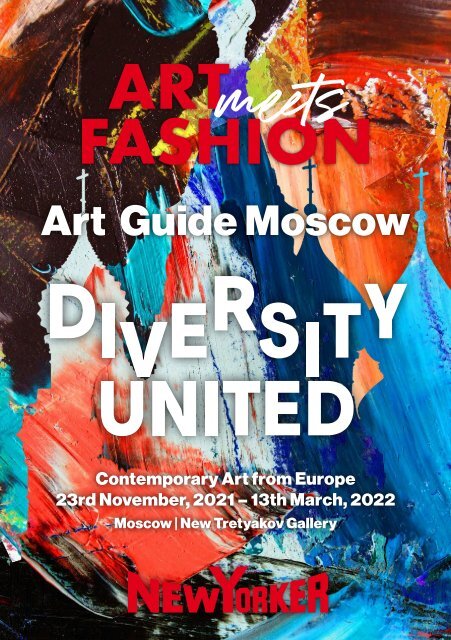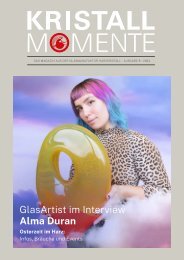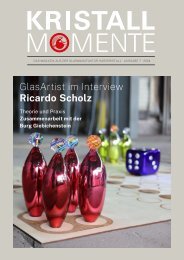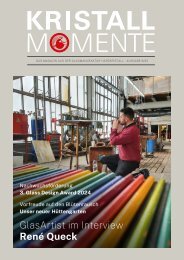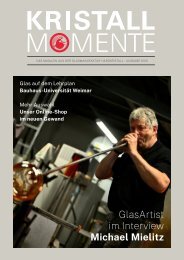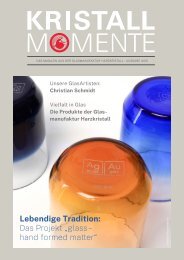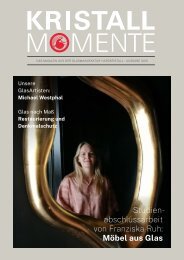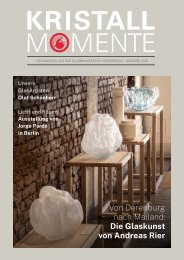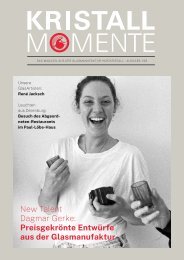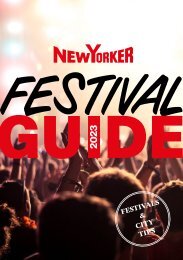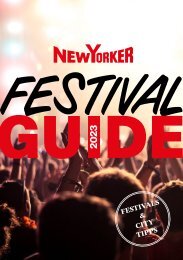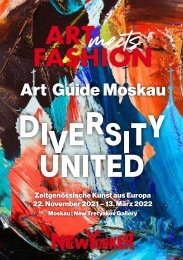NEW YORKER / Diversity United - Art Guide Moscow 22.11.21 – 13.03.22
Diversity United is an artistic atmospheric image of contemporary Europe. The international exhibition brings together painting, sculpture, video and new media, photography, installation, drawing and object art by around 90 artists from 34 countries, representing different generations, genders and regions. Their works represent the enormous diversity and vitality of Europe‘s contemporary art scene, from Portugal to Russia, from Norway to Turkey. The exhibition sheds light on themes such as freedom and democracy, migration and territory, political and personal identity, utopias and fears, which also revolve around the current pandemic.
Diversity United is an artistic atmospheric image of contemporary Europe. The international exhibition brings together painting, sculpture, video and new media, photography, installation, drawing and object art by around 90 artists from 34 countries, representing different generations, genders and regions. Their works represent the enormous diversity and vitality of Europe‘s contemporary art scene, from Portugal to Russia, from Norway to Turkey. The exhibition sheds light on themes such as freedom and democracy, migration and territory, political and personal identity, utopias and fears, which also revolve around the current pandemic.
Create successful ePaper yourself
Turn your PDF publications into a flip-book with our unique Google optimized e-Paper software.
ART<br />
FASHION
— Christian Boltanski<br />
90 artists.<br />
34 countries.<br />
1 continent in dialogue.<br />
That is <strong>Diversity</strong> <strong>United</strong>!<br />
<strong>Diversity</strong> <strong>United</strong> is an artistic atmospheric image of contemporary Europe.<br />
The international exhibition brings together painting, sculpture,<br />
video and new media, photography, installation, drawing and object<br />
art by around 90 artists from 34 countries, representing different<br />
generations, genders and regions. Their works represent the enormous<br />
diversity and vitality of Europe‘s contemporary art scene, from<br />
Portugal to Russia, from Norway to Turkey. The exhibition sheds light<br />
on themes such as freedom and democracy, migration and territory,<br />
political and personal identity, utopias and fears, which also revolve<br />
around the current pandemic.<br />
<strong>Diversity</strong> <strong>United</strong> reflects the complexity of the European idea and its<br />
social realities in a globalized world.<br />
<strong>NEW</strong> <strong>YORKER</strong>‘s commitment once again demonstrates its close ties<br />
to the field of art and hereby underpins its already successful collaborations<br />
with the artist Jim Avignon and the art collective KLUB7.
elcome!<br />
<strong>Diversity</strong> <strong>United</strong><br />
Exhibition Facts<br />
Address:<br />
New Tretyakov Gallery Krymsky Val, 10, Moskva, Russia, 119049<br />
Opening Hours:<br />
Sun/Thu/Wed 10 am - 6 pm | Mon closed | Thu-Sat 10 am - 9 pm<br />
Opening hours may vary on Christmas and New Year holidays.<br />
Tickets:<br />
Bookable at www.diversity-united.com<br />
Imprint:<br />
<strong>NEW</strong> <strong>YORKER</strong> Marketing & Media International GmbH<br />
Hansestrasse 48<br />
38112 Brunswick<br />
Germany<br />
Editorial:<br />
<strong>Diversity</strong> <strong>United</strong> (art contributions),<br />
<strong>NEW</strong> <strong>YORKER</strong> Music & Media (Interview, <strong>Moscow</strong> Facts, Gastro and Music)<br />
Graphics: <strong>NEW</strong> <strong>YORKER</strong>, Andreas Bohn<br />
© VG Bild-Kunst, Bonn 2021 for the works illustrated;<br />
Photo credits Installation views: Julia Zaharova / Tretyakov gallery
Prof. Walter Smerling is the founding<br />
director of the MKM Museum<br />
Küppersmühle for Modern <strong>Art</strong> in<br />
Duisburg and chairman of the Bonn<br />
Foundation for <strong>Art</strong> and Culture,<br />
which is responsible for the overall<br />
organization of „<strong>Diversity</strong> <strong>United</strong>“ at<br />
all three exhibition venues.<br />
large blocks that look like stone<br />
blocks, but made of plastic. They can<br />
be used to build an amphitheater, for<br />
example. And questions arise: How<br />
does democracy work? Is it the best<br />
form of government we have? What<br />
is the current situation in Europe with<br />
its particular interests? Is there more<br />
egomania now than before? How do<br />
we deal with digitalization? Some<br />
artists create works that the public<br />
can find digitally on the wall. Or the<br />
juxtaposition of analog and digital<br />
now, during the crisis, the question of<br />
the value of art and culture in society<br />
is becoming increasingly important.<br />
Is art systemically relevant?<br />
For me, art and culture are very relevant<br />
elements of our lives. <strong>Art</strong> mirrors<br />
us. We have to be attentive and<br />
engaged with it. A healthy body also<br />
needs a healthy mind. Many things,<br />
such as the fashion industry, for example,<br />
would not have developed as<br />
they have without artistic influence.<br />
<strong>Art</strong> is essential for our everyday life.<br />
Prof. Walter Smerling<br />
in conversation about<br />
<strong>Diversity</strong> <strong>United</strong>:<br />
When did you come up with the<br />
idea for „<strong>Diversity</strong> <strong>United</strong>“ and<br />
what is it about the three locations<br />
<strong>Moscow</strong>, Berlin and Paris?<br />
With the Foundation for <strong>Art</strong> and<br />
Culture, we had just held the exhibition<br />
„Germany 8 - German <strong>Art</strong> in<br />
China“ in the Forbidden City in the<br />
center of Beijing. At that moment<br />
I had the thought: whats happening<br />
here should also be possible in<br />
Europe. We showed the German face<br />
of art in China, at a time when there<br />
were many challenges in common<br />
understanding in other areas. And as<br />
we have seen: <strong>Art</strong> can build bridges.<br />
Quickly, in terms of Europe, the<br />
idea of unity and diversity was born,<br />
„<strong>Diversity</strong> <strong>United</strong>.“ And with <strong>Moscow</strong>,<br />
Berlin and Paris, three places were<br />
chosen that are relevant both today<br />
and from a historical perspective.<br />
The exhibition themes seem<br />
very complex: freedom and dignity,<br />
dialogue and conflict, political<br />
and personal identity, democracy<br />
and its erosion, (fear of) the<br />
future, solidarity and division, the<br />
consequences of the current pandemic.<br />
To what extent are these<br />
themes reflected in the selection<br />
of artists?<br />
In our selection process, we carefully<br />
analyzed the artists‘ work and were<br />
able to see the correspondence to<br />
our themes in those that we included<br />
in the exhibition. For example, how<br />
Gilbert & George deal with everyday<br />
life, or others with the theme of<br />
democracy. The Greek artist Angeli<br />
Dakis, for example, creates a space<br />
that the audience or the visitor can<br />
shape themselves. It consists of<br />
Photo: David Ausserhofer<br />
photography. The digital world also<br />
creates many fears and communication<br />
problems, and the issues of our<br />
society are reflected in art, whether<br />
in Western, Eastern, Northern, Central<br />
or Southern Europe.<br />
How do you explain what art is to<br />
those who are not part of the typical<br />
audience?<br />
<strong>Art</strong> is a form of expression that<br />
brings together intellect and emotion,<br />
it creates something that grabs<br />
you. Everyone carries creativity within<br />
them. A good example to explain<br />
art is the Mona Lisa‘s smile. Why?<br />
Because you will never know if it expresses<br />
laughter or irony. Especially<br />
What comes to mind instantly<br />
when thinking about fashion and<br />
art?<br />
There is a close relationship. As early<br />
as the 1970s, fashion designer Yves<br />
Saint Laurent was inspired by art<br />
for his designs, specifically by Piet<br />
Mondrian and his constructive color<br />
elements with black strokes to colored<br />
squares. Before a structure is<br />
created, the drawing usually comes<br />
first. This is where artists and fashion<br />
designers have a lot in common in<br />
creating a piece of art or a dress. The<br />
most direct path from the head to the<br />
paper is via the arm.
Kremlin secret<br />
The Kremlin is the seat of the<br />
Russian president and, with its<br />
more than two-kilometer-long<br />
red brick wall, probably the city‘s<br />
best-known landmark. But this was<br />
not always the case: the medieval<br />
fortress, which has been a UNESCO<br />
World Heritage Site since 1990, only<br />
acquired its red color at the end of<br />
the 19th century. For around 300<br />
years, the walls and towers were<br />
painted white.<br />
False <strong>Moscow</strong><br />
Even if the name suggests<br />
otherwise, the <strong>Moscow</strong> Mule<br />
originated in the <strong>United</strong> States<br />
in the early 1940s, but it is<br />
closely linked to the Smirnoff<br />
distillery founded in <strong>Moscow</strong><br />
at the end of the 19th century,<br />
whose „Smirnoff Vodka“ was<br />
soon to be made known in<br />
North America.<br />
Soaring high<br />
At 540 meters, the Ostankino<br />
TV tower in the north of <strong>Moscow</strong><br />
is the tallest structure in<br />
Europe - since its opening in<br />
1967, it was even the tallest<br />
free-standing structure in the<br />
world until 1975. The integrated<br />
revolving restaurant „Seventh<br />
Heaven“ provides spectacular<br />
views over <strong>Moscow</strong>.<br />
Go big!<br />
<strong>Moscow</strong>‘s official population is<br />
12.7 million (01/2021) <strong>–</strong> as large<br />
as Finland and Denmark combined!<br />
In Gorky Park alone, a<br />
green oasis in the middle of the<br />
big city, up to 100,000 people<br />
usually gather on a weekend day.<br />
Clever dogs<br />
The <strong>Moscow</strong> Metro is used by up<br />
to nine million passengers every<br />
day and is one of the world‘s largest.<br />
But it‘s not just people who<br />
use this convenient way of getting<br />
from A to B: <strong>Moscow</strong>‘s street dogs<br />
have also adapted to the traffic.<br />
In search of food, the animals not<br />
only obey traffic rules to avoid<br />
being run over on the road, but<br />
even ride the subway! They<br />
have learned to recognize the<br />
stops from the loudspeaker announcements<br />
and even hop on<br />
a seat for a nap. In the evening,<br />
some dogs even ride back to<br />
the suburbs.<br />
The exhibition location:<br />
The State Tretyakov Gallery<br />
The museum, which houses one<br />
of Russia‘s largest and most<br />
famous art collections, takes its<br />
name from textile merchant and<br />
art collector Pavel Mikhailovich<br />
Tretyakov, who throughout his<br />
life not only built up a considerable<br />
collection of mainly contemporary<br />
Russian artwork, but also,<br />
together with his younger brother<br />
Sergei, constructed the premises<br />
in which the works found their<br />
place. In 1892, Pavel Tretyakov<br />
donated his collection and that of<br />
his late brother to the city of <strong>Moscow</strong>.<br />
At that time, the collection<br />
included almost 2,000 works of<br />
art. Today, the collection includes<br />
more than 180,000 works of art<br />
distributed among three sites: the<br />
Tretyakov Gallery, the New Tretyakov<br />
Gallery, and in the studios<br />
and apartments of the exhibiting<br />
artists.
We introduce some<br />
of the participating artists:<br />
Eija-Liisa Ahtila, Andreas Angelidakis, Michael Armitage, Yael Bartana,<br />
Georg Baselitz, Bluesoup, Christian Boltanski, Monica Bonvicini,<br />
Sonia Boyce, Pavel Br•ila, Maurizio Cattelan, Olga Chernysheva,<br />
Tacita Dean,Rineke Dijkstra, Aleksandra Domanovi•, Constant<br />
Dullaart, OlafurEliasson, Kristaps Epners, Valérie Favre, Pia Fries,<br />
Adrian Ghenie,Gilbert & George, Antony Gormley, Manuel Graf, Ane<br />
Graff, Petrit Halilaj, Mona Hatoum, Sheila Hicks, Sanja Ivekovi•, Isaac<br />
Julien,Ilya & Emilia Kabakov, Patricia Kaersenhout, •ejla Kameri•,<br />
Anselm Kiefer, Kapwani Kiwanga, Peter Kogler, Irina Korina, Eva<br />
Kot’átková, Alicja Kwade, Kris Lemsalu, Cristina Lucas, Goshka<br />
Macuga, Kris Martin, Dóra Maurer, Annette Messager, Marzia Migliora,<br />
Boris Mikhailov, Richard Mosse, Ekaterina Muromtseva, Henrike<br />
Naumann, Mariele Neudecker, Katja Novitskova, Ahmet Ö••üt,<br />
Roman Ondak, Lucy + Jorge Orta, Dan Perjovschi, Grayson Perry,<br />
Anders Petersen, Agnieszka Polska, Tal R, Paula Rego, Gerhard<br />
Richter, Ugo Rondinone, Adam Saks, Anri Sala, Fernando Sánchez<br />
Castillo, Tristan Schulze, Yinka Shonibare CBE, Katharina Sieverding,<br />
Slavs and Tatars, Nedko Solakov, Jan Svenungsson, Wolfgang<br />
Tillmans,Rosemarie Trockel, Tatiana Trouvé, Luc Tuymans, Martina<br />
Vacheva,Ulla von Brandenburg, Marko Vuokola, Rachel Whiteread,<br />
Per Wizén, Erwin Wurm, Cerith Wyn Evans, Nil Yalter, Yan Pei-Ming<br />
© Lucy + Jorge Orta and VG Bild-Kunst Bonn, Photo: Thierry BalLucy and Jorge Orta:<br />
Antarctic Village<br />
The artist duo Lucy and Jorge Orta have been working for many years<br />
with sculpture and photography, as well as interventions in public<br />
spaces. Antarctica is characterized by its natural, well-preserved<br />
landscape and its political neutrality - thanks to the Antarctic Treaty,<br />
which came into force in 1961 to regulate international relations for<br />
the protection of the Antarctic environment. For Lucy and Jorge Orta,<br />
Antarctica is a utopia for which they have made several pieces such<br />
as tents, passports and a passport office. They have created an imaginary<br />
community from all over the world, without national borders.<br />
To become a citizen of Antarctica, one must support social progress,<br />
protect the environment and human dignity, and fight for freedom,<br />
justice and peace.
Maurizio Cattelan<br />
Maurizio Cattelan is a „disciple in the spirit“ of Marcel Duchamp.<br />
His sculptures and installations have earned him a reputation as a<br />
provocateur and master of black humor. But just how much seriousness<br />
is hidden behind his seemingly ironic approach is shown in the<br />
black-and-white photograph Cesena 47 - A.C. Forniture Sud 12, which<br />
depicts an oversized soccer table with two teams standing at its<br />
sides, carefully separated into two clubs, two skin colors, two jersey<br />
colors. Cattelan confronts the holy of holies of the Italians - soccer<br />
- with two socially sensitive issues that are still (the work dates from<br />
1991) of pan-European importance: Immigration and Racism. Cattelan<br />
brings both themes into everyday life and stages them as a game that,<br />
in its exaggeration, literally as a stretch, tips almost mockingly into<br />
the ridiculous. Everything is neatly separated - but the joy the players<br />
experience creates common ground.<br />
Maurizio Cattelan, Cesena 47-A.C. Forniture Sud 12A.C., 1991, Black and white photograph, 120 x 190 cm, Private collection,<br />
© Maurizio Cattelan, photo: courtesy of Maurizio Cattelan archive<br />
Photo: <strong>Diversity</strong> <strong>United</strong> / Text: Peter Weibel<br />
Alicja Kwade<br />
Sculpture of the 20th century developed between the two poles of<br />
space and utilitarian object. The bed sculpture of Alicja Kwade is exactly<br />
in this bracket: on the one hand a bed for use‘ on the other hand<br />
above it an empty space. The jammed natural stones seem threatening,<br />
because they could fall. The bed as furniture is part of a room, the<br />
room part of a house. Pars pro toto, therefore, the bed stands for the<br />
house. From the Greek word for house (community), „oikos“, derive<br />
the terms „ecology“ and „economy“. The installation impressively<br />
visualizes the instability and fragility of the ‚house‘ of the world and,<br />
above all, the ecological and economic crisis in which planet Earth<br />
finds itself. Who comes to rest in this threatened bed? Is it the sickbed<br />
for planet earth? Kwade‘s sculpture, with its linguistic and conceptual<br />
techniques of displacement and condensation, of metaphor and metonymy,<br />
opens up a horizon of thought‘ that very precisely illustrates<br />
the instantaneous world situation.
Shiela Hicks, LIBERATING REALITY,2020, acrylic, wood, linen, each -100 cm, total dimension<br />
variable,© Sheila Hicks and VG Bild-Kunst, Bonn 2020.Photo: Christobal Zanartu<br />
Sheila Hicks<br />
Sheila Hicks is an American textile artist. She was a student of Josef<br />
Albers at Yale University in the 1950s; at this time she also met Anni<br />
Albers and George Kubler, who was a professor of the history of Hispanic<br />
American art. Their shared influence and a trip to South America<br />
in the late 1950s led Hicks to her rigorous and beautiful sense<br />
of color and abstraction in textile art. During this time, she studied<br />
pre-Columbian textiles for her thesis and became a teacher of color<br />
and design at the University of Mexico. After working with architects<br />
in Mexico and at a time when the art world‘s attention was mainly<br />
focused on the <strong>United</strong> States, she moved to France in 1964. The<br />
history of abstraction in Europe has subsequently been influenced<br />
by her work, particularly in its fusion of textile and sculpture, from the<br />
small to the monumental, and in its stimulation of new interpretations<br />
of Bauhaus teachings. Sheila Hicks‘ work also helped redraw the line<br />
between art and craft.<br />
Gerhard Richter<br />
Gerhard Richter takes us on a personal journey through Europe,<br />
to places and people that he assembles into an encyclopedia of<br />
fleeting moments. He stages the dialogue between painting and<br />
photography like no other, commenting since the 1960s on the<br />
central questions of image and simulacrum, creation and reproduction.<br />
Photography,“ Richter argues, „has almost no reality; it<br />
is almost 100 percent image. And painting always has reality: you<br />
can touch the paint - it has presence; but it always makes a picture.“<br />
For <strong>Diversity</strong> <strong>United</strong>, he has selected a small-format series<br />
of his famous overpaintings: personal photographs that he has<br />
subsequently reworked with paint. The original motif remains allusive<br />
and recognizable, but the applied paint has its own reality.<br />
Richter shows us the world and withdraws it from us again in the<br />
same moment. The painting conceals parts of the image and at<br />
the same time sharpens the eye for new perspectives.<br />
Private Collection, © Gerhard Richter
<strong>Moscow</strong> <strong>Guide</strong><br />
Depo <strong>Moscow</strong><br />
FoodMall<br />
Lesnaya Ulitsa, 20,<br />
125047 <strong>Moscow</strong><br />
Noor Elektro<br />
23/12 Twerskaja<br />
Ulitsa, 103050<br />
<strong>Moscow</strong><br />
<strong>NEW</strong> <strong>YORKER</strong><br />
<strong>Moscow</strong> SC AFI M<br />
Presnenshaya<br />
Naberezhnanya Str.2<br />
123317 <strong>Moscow</strong><br />
I Love Cake<br />
Bol‘shoy Patriarshiy<br />
Pereulok, 4,<br />
123001 <strong>Moscow</strong> Remy Kitchen<br />
Bakery<br />
Malaya Bronnaya St,<br />
2, 123104 <strong>Moscow</strong><br />
Black Star Burger<br />
New Arbat Ave,<br />
15/1, 119002<br />
<strong>Moscow</strong><br />
Surf Coffee<br />
Myasnitskaya<br />
Ulitsa, 16,<br />
101000 <strong>Moscow</strong><br />
Flâner<br />
Krivokolennyy<br />
Pereulok, 7,<br />
101000 <strong>Moscow</strong><br />
<strong>NEW</strong> <strong>YORKER</strong><br />
<strong>Moscow</strong>, SC GOROD<br />
Chaussee<br />
Entusiastov 12-2<br />
111024 <strong>Moscow</strong><br />
Further <strong>NEW</strong> <strong>YORKER</strong> stores:<br />
REUTOV SC, 2 km MKAD 2, 143960 Reutov <strong>Moscow</strong><br />
<strong>Moscow</strong>.SC TSCHE, B.Tscheremuschkinskaja Str., 1, 117447 <strong>Moscow</strong><br />
<strong>Moscow</strong>, SC AVIA, Khodynskij Bulvar 4, SC Avia Park, 123007 <strong>Moscow</strong><br />
<strong>Moscow</strong>,IKEA MEG, Kotelniki Pokorovskiy r-n, 140055 <strong>Moscow</strong><br />
<strong>Moscow</strong>, SC SALA, Kievskoe Shossee, SC Salaris, 142784 <strong>Moscow</strong><br />
<strong>Moscow</strong>,ROSTOKIN, Prospekt Mira 211, 129226 <strong>Moscow</strong><br />
<strong>Moscow</strong>, SC, 24 km MKAD, SC Vegas Mall, 115820 <strong>Moscow</strong><br />
<strong>Moscow</strong>, RIO GRAN, Dmitrovskje Chaussee163a, 127204 <strong>Moscow</strong><br />
<strong>Diversity</strong> <strong>United</strong><br />
New Tretyakov Gallery<br />
Krymsky Val, 10,<br />
119049 <strong>Moscow</strong>
The Russian capital is rich in culinary highlights.<br />
Away from the top restaurants, a young and<br />
creative scene has established itself, with diverse<br />
international influences. Here we show<br />
you hip locations that wont put too much strain<br />
on your budget.<br />
Great choice in the<br />
Depo <strong>Moscow</strong> FoodMall<br />
The culinary paradise in a former<br />
streetcar depot is considered Europe’s<br />
largest food mall. Depo <strong>Moscow</strong><br />
in the Russian capital counts<br />
75 restaurants and 60 market stalls.<br />
Since opening in spring 2019, the<br />
food hall has become a hot spot for<br />
all foodies; many young people and<br />
creative people go here to eat.<br />
Depo <strong>Moscow</strong> FoodMall<br />
Lesnaya Ulitsa, 20 стр.3,<br />
125047 <strong>Moscow</strong><br />
www.depomoscow.ru<br />
Mon.-Thu. & Sun.<br />
10:00 a.m. - 11:00 p.m.<br />
Fri./Sat. 10:00 - 2:00 a.m.<br />
Photos: Depo <strong>Moscow</strong>
The name says it all:<br />
I Love Cake<br />
If you love cupcakes, you’ve<br />
come to the right place. I Love<br />
Cake is a true paradise for those<br />
with a sweet tooth. The large<br />
display case really whets your<br />
appetite: brownies, cakes in<br />
different variations and toppings<br />
- it’s really hard to choose!<br />
And the coffee to go with it is<br />
also a dream and really hard to<br />
find in <strong>Moscow</strong>.<br />
I Love Cake<br />
Bol’shoy Patriarshiy Pereulok, 4,<br />
123001 <strong>Moscow</strong><br />
www.friends-forever.ru<br />
Monday - Sunday: 8:00 - 23:00<br />
Freshly baked in Remy Kitchen Bakery<br />
This is no ordinary bakery, but a restaurant with a bakery and pastry<br />
shop. The restaurant has international dishes on the menu, many of<br />
which are prepared over a fire grill. The highlight is the bakery, which<br />
has its own menu and offers fresh goods baked on site, including<br />
takeaway - such as fluffy French croissants, berry tarts or several<br />
varieties of natural sourdough bread.<br />
Remy Kitchen Bakery<br />
Malaya Bronnaya St., 2, 123104 <strong>Moscow</strong><br />
www.remykitchenbakery.ru<br />
Monday - Sunday: 8:00 - 0:00<br />
Photos: Remy Kitchen Bakery, I love Cake
Burgers straight from the rap star at Black Star Burger<br />
Something different than the usual burger stores? At Black Star<br />
Burger there are not only delicious burgers in different variations<br />
and in the top price / performance ratio. The ambience is also very<br />
cool and classy for a burger joint; even your food is served with black<br />
gloves. Behind the chain is, among others, the Russian hip hop<br />
star Timati.<br />
Black Star Burger<br />
various locations, including New Arbat Ave, 15/1, 119002 <strong>Moscow</strong><br />
www.blackstarburger.ru<br />
Monday - Sunday: 11:00 a.m. - 11:00 p.m.<br />
Photos: Black Star Burger, Noor Elektro<br />
For a cocktail to Noor Electro<br />
Noor Electro is a hip cocktail bar located in the same building as the<br />
avant-garde electro theater. Everyone is welcome in the cozy bar<br />
and the cocktail selection is unique. In addition, live music shows are<br />
often held on weekends, often featuring local newcomers, but also<br />
international acts.<br />
Photos: Black Star Burger, Noor Elektro<br />
Noor Electro<br />
23/12 Tverskaya Ulitsa,<br />
Mayakovskaya Metro.<br />
www.noorbar.com<br />
Monday - Thursday: 15:00 - 3:00<br />
Friday/Saturday: 11:00 - 6:00<br />
Sunday: 11:00 - 3:00
More than just coffee: Surf Coffee<br />
The creators of the Surf Coffee chain love their coffee and surfing.<br />
Combining these two passions has created one of the hottest coffee<br />
house chains in the entire country. They serve great coffee, plus signature<br />
drinks like double Hawaiian cappuccino. The walls are decorated<br />
with surfboards and other stylish accessories.<br />
Surf Coffee<br />
various locations, e.g. Myasnitskaya Ulitsa, 16, 101000 <strong>Moscow</strong><br />
www.surfcoffee.ru<br />
Mon.-Fri. 08:00 - 23:00,<br />
Sat./Sun. 10:00 - 23:00 hrs.<br />
Israeli fusion cuisine at Flâner<br />
Like music, cooking is an art that makes people happy. At Flâner, both<br />
come together in a gastronomic concept that invites you on a culinary<br />
journey to Israel. The flâneur atmosphere, like a stroll through Tel Aviv<br />
with its Arabic, Persian, Palestinian or North African-inspired cuisine,<br />
is also reflected in the varied menu. And in addition, you can enjoy<br />
good cocktails in the original interior design!<br />
Flâner<br />
Krivokolenny Pereulok, 7, 101000 <strong>Moscow</strong><br />
www.flanermoscow.ru<br />
Mon.-Fri.: 09.00 - 00.00 hrs.<br />
Sat./Sun.: 10.00 - 00.00 a.m.<br />
Photos: instagram.com/flaner.moscow
Russia has a thriving young music scene. After<br />
pop music was the most popular genre for a<br />
long time, hip hop and independent are now the<br />
styles of the hour. Thanks to YouTube, TikTok or<br />
Spotify, musicians also reach a wide audience<br />
at home and abroad.<br />
Little Big<br />
The Russian punk-pop-rave collective from St. Petersburg has a penchant<br />
for the absurd and for self-mockery. Late with the „Skibidi Challenge“<br />
Little Big have also reached worldwide fame, the dance from the YouTube<br />
video, which has reached over 550 million views to date, became a widespread<br />
phenomenon in Russia. Originally, Little Big was supposed to compete<br />
for Russia at the Eurovision Song Contest 2020 with the song „Uno“,<br />
but it was cancelled due to the coronavirus. Currently, the four exceptional<br />
artists are collaborating with US singer/songwriter Oliver Tree and Estonian<br />
rapper Tommy Cash on their joint chart success „Turn It Up“.<br />
Boulevard Depo<br />
He is one of the big names of the<br />
year in Russian rap. His last album<br />
„Old Blood“ was at the top of the<br />
Apple Music album charts for<br />
weeks. <strong>Art</strong>em Kulik, his real name,<br />
comes from the graffiti scene of<br />
his native Ufa and was one of the<br />
founders of the rap collective „Yungrussia,“<br />
which disbanded at the<br />
end of 2016. However, by that time<br />
all the members, including Pharaoh<br />
or i61, were already very successful<br />
as solo artists.<br />
Photos: Warner Music
Shortparis<br />
Indie rock band Shortparis is hailed by the international press as „the<br />
best Russian live act.“ Hailing from St. Petersburg, the band led by<br />
charismatic frontman Nikolay Komiagin has made a name for itself<br />
with their breathtaking performances. Whether sung in Russian,<br />
French, or English, their songs are complex and intense - post-punk,<br />
experimental noise, and acoustic chansons blend into a unique musical<br />
aesthetic.<br />
Photos: Labels<br />
Scriptonite<br />
Superlatives, as far as streaming numbers are concerned, are constantly<br />
being outdone. The 31-year-old rapper Scriptonite has been<br />
consistently at the top of the charts for some time now and is undisputedly<br />
one of Russia‘s biggest rap stars. Growing up as Adil Zhalelov<br />
in Pavlodar (Kazakhstan), Dr. Dre and Eminem his influences - you can<br />
also hear that in his music, which comes along not brutal, but melodic.<br />
His 2015 debut album „House With Normal Activity“ was critically<br />
acclaimed. The world in Scriptonite‘s songs is gloomy, characterized<br />
by money, parties, women and alcohol - sounds like gangsta rap, but<br />
comes across quite differently. This creative talent has many collaborations<br />
that have come together to form the collective „36 Jam“.
MORNING SHTERN<br />
Born Alischer Valeyev in 1998 in Ufa, some 1300 kilometers east of<br />
<strong>Moscow</strong>, rapper Morgenshtern is currently one of the Russian musicians<br />
of the moment, with YouTube clicks in the millions. He recorded<br />
his first track at the age of twelve. He became known for his YouTube<br />
show „#EasyRap,“ in which he challenged popular Russian rappers<br />
and showed how his tracks were created in just a few minutes. Moving<br />
to <strong>Moscow</strong> in 2018 gave his career another boost: shortly after, he celebrated<br />
his breakthrough with the song „Novyj Merin,“ then released<br />
the single „Cadillac“ together with Eldzhey - his most successful<br />
music video to date with 100 million clicks. Fun fact: Morgenshtern is<br />
the first man in Russia to receive a „Woman of the Year“ award (2020);<br />
in the same year he was also awarded „Musician of the Year“ by GQ<br />
Person of the Year.<br />
Photo: Wikipedia


